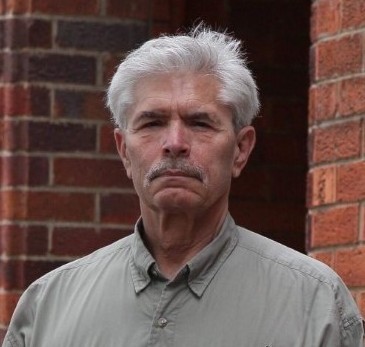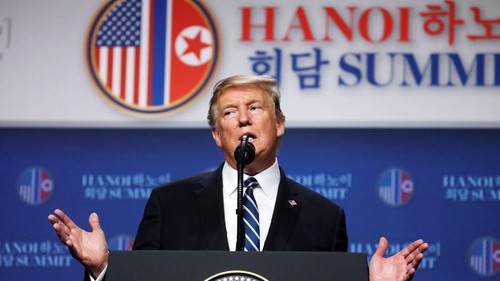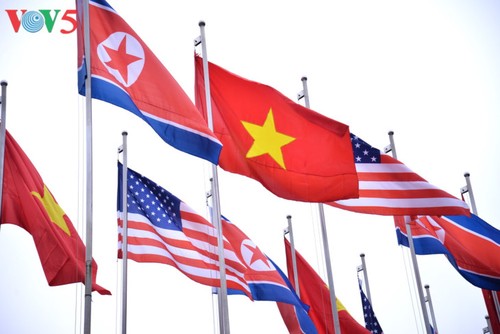
Terry F. Buss, PhD
Fellow, National Academy of Public Administration
Volunteer on Fulbright School Advisory Group
|
On February 28, both President Donald Trump and Chairman Kim Jong Un suddenly, without warning, walked out of the negotiations saying that no agreement had been reached.
Trump moved his departure from Vietnam up three hours and hastily held a departing news conference to explain the impasse. He then left town immediately. North Korea held a very brief news conference several hours later.
How did expectations move from the greatest deal of the decade to no deal, not only being unable to agree on removing sanctions and denuclearize, but not even being able to announce a minor achievement like establishing a US office in Pyongyang.
I was suspicious of the entire Summit process from the start. Here’s my reasoning.
Preparation for the Summit lacking
The first denuclearization Summit was held in Singapore last June. Even with super human efforts, it is difficult to believe that such an historic agreement could be hatched out in 8 months following Singapore. Diplomacy just doesn’t work that way.
The Barack Obama administration took nearly two years of intense meetings to conclude an agreement with Iran over its fledgling weapons program. North Korea already has weapons suggesting it should require at least that long for negotiation.
Early reporting suggested that neither country’s negotiators had taken the necessary time to produce an agreement that Trump and Kim could sign. Rather, both sides were relying on the “personal diplomacy” skills of the leaders. Trump and Kim hoped to engage in a “charm offensive” to convince one another to accept their negotiating stances, sanctions relief and limited denuclearization, respectively.
Had subordinates “really” put in the hard work of negotiating, both sides would have realized that an agreement would be out of reach.
It’s interesting to note that Kim repeatedly referred to negotiations in the past as a “long march” [a reference to Chairman Mao’s military expedition to evade Chinese nationalists in the 1930s] when addressing North Koreans, yet he felt he could reach a quick deal with Trump.
Negotiating positions made no sense
In addition to counting on charming one another to reach an agreement, it seems clear that Trump and Kim did not accurately understand each other’s position on sanctions and denuclearization from the beginning.
Trump thought that Kim would accept removal of sanctions “in their entirety.” Whereas Kim has since reported in a news conference that he was interested in only a handful of sanctions targeted for removal, import of petroleum being the major concern.
 US President Donald Trump and DPRK Chairman Kim Jung Un during their second summit in Hanoi, February 27-28, 2019. (Photo: VNA) US President Donald Trump and DPRK Chairman Kim Jung Un during their second summit in Hanoi, February 27-28, 2019. (Photo: VNA) |
Importantly, many observers and even officials in Trump’s administration were afraid that Trump would give in on sanctions, because he was so desperate to get an agreement. But in reality, he clearly was committed to a “hard line” in keeping sanctions in place. It’s unclear whether Trump wanted to embarrass his numerous detractors who flooded the news media for days before the Summit by not revealing his position.
His hardline position also makes sense in that Trump has never publically indicated that he had spoken to the UN Security Council, South Korea, Japan, China or Russia on removing sanctions. These countries would certainly have made their positions very public if he had. Apparently, it is not a simple matter to remove sanctions. In the US, for example, Congress might intervene as they have on Iran and Russia.
Trump’s position was to hold out for complete “denuclearization” on North Korea. Kim’s view that he could obtain sanctions relief simply by dismantling the Yongbyon facility represented an unrealistic goal. Yongbyon—a facility to enrich uranium and plutonium—was supposed to have been dismantled long ago under Kim’s father in 1994, but was reopened twice in violation of agreements over the next 10 years. So, it would appear strange to Trump that this would be Kim’s proffer to denuclearize in exchange for sanction relief. Additionally, US intelligence agencies had evidence that Kim had moved and hidden at least 20 nuclear weapons sites ahead of the Summit, casting doubt over his credibility. Two of the 20 replicate Yongbyon’s capabilities. Trump reported that he surprised Kim by releasing this intelligence.
To add even more confusion, Trump rejected a sweeping intelligence report—World Threat Assessment—just before the Summit. The director of National Defense Intelligence had warned that North Korea was a major threat and that it would never give up its nuclear weapons through negotiation. Trump publically criticized the ODNI director and even considered firing him. This gave many observers the impression that Trump would not seek total denuclearization of North Korea at the Summit.
At the same time, Trump continually asserted that North Korea was no longer a threat with respect to nuclear weapons, and that it was now interested in economic development for the North Korean people.
Trump’s statements, as opposed to his beliefs, clearly failed to grasp that possession of nuclear weapons has always been non-negotiable for North Korea, the fear of regime change being paramount. So, for Trump to believe that Kim would come to the Summit expecting to entirely dismantle his nuclear infrastructure was highly misleading.
How did misunderstandings stay in place?
The obvious explanation for the Summit’s collapse was that neither side really understood the bargaining position of the other and both sides thought they could change the other’s bargaining position. Given that the Summit really only lasted two hours or so, there was no way an agreement could have been reached.
But why did both countries come to the Summit with inflexible positions. Likely, both felt that their burgeoning friendship might soften each other’s negotiating position.
Or, some might argue that perhaps one side would make unexpected, last minute demands on the other and force them to concede in the interest of saving face or getting an agreement no matter what. Trump could have switched to a hard line position on sanctions and Kim could have withdrawn from more far-ranging denuclearization.While some negotiations in the past may have featured this strategy, it is clear that this was not the case.
 US President Donald Trump briefs reporters about the outcome of his second summit with DPRK Chairman Kim Jung Un in Hanoi on February 28, 2019. (Photo: Reuters) US President Donald Trump briefs reporters about the outcome of his second summit with DPRK Chairman Kim Jung Un in Hanoi on February 28, 2019. (Photo: Reuters) |
Interestingly, walking out of meetings has been a strategy for North Koreans on several nuclear weapons summits since the 1980s. But it is also a Trump strategy: he is famous for saying that at sometime in any deal, one must be prepared to walk away. Recall that Trump called off the Singapore Summit when be believed that little progress was being made with North Korea.
One or the other of these negotiators may have done this. Perhaps they both did. But, unlike past walkouts, this one seemed not to produce hard feelings and recriminations. Both sides merely recalled that they disagreed on sanctions relief and the meaning of denuclearization. They clearly were leaving open the possibility of future talks.
It should be noted that Trump thinks he might win a Nobel Prize for his efforts. Commentators around the world speculated that Trump would never walk away if the Nobel was a stake. They were clearly wrong. Also, commentators were reporting that Trump had to get a deal with Kim at any cost, because Trump needed a “win” in face of his growing political problems at home. They were also wrong.
If all of the above is true, it was not a smart strategy for either country: usually, high level officials negotiate a final deal before a summit so that each side has agreed and is ready to sign off on the deal. This didn’t happen, and was never intended. It appeared that Trump and Kim were surprised that no agreement could be reached. Each seemed to have more faith in their charm skills than was warranted.
It’s even stranger that so little time—three hours—were allowed for the meeting and the signing, while no agreement had been reached. That does not seem to be enough time to negotiate, prepare a statement, and hold a press conference. This should have been a major tip off that an agreement would not be forthcoming. In hindsight, it now adds meaning to Trump’s repeated expression that there is no rush in securing an agreement.
It also now makes sense when Trump now says that “no deal is better than a bad deal.” Trump seems to have had this sentiment in mind all along.
This negotiation was also unusual in that when countries disagree, they usually have a prepared statement that represents good will and a desire to meet again. In most cases, countries typically agree on some achievable goal so that they are not left empty handed. No Summit statement or achievable goal was evident. Observers seemed to believe that Trump and Kim would announce a Peace Declaration to end the Korean War.
Both sides clearly anticipated that “no deal” was a high probability.
Prospects for the future
The future of the talks seems to depend on Kim’s willingness to denuclearize. That means identifying all nuclear facilities and opening them up for inspection. It means an agreed upon schedule for goals and milestones. This is a “tall order.”
It does not appear that Trump would accept a gradual lifting of sanctions for a gradual dismantling of nuclear facilities. So it may be all or nothing at all for future Summits.
Trump believes that he extracted a commitment from Kim not to test nuclear weapons in the future. Whether Kim keeps his word will be telling about the future of negotiations. Trump just announced that he had once again cancelled joint US-South Korean war games, likely a sign of good will toward North Korea.
 National flags of Vietnam, the DPRK, and the US fly in Hanoi, welcoming the second Trump-Kim summit. National flags of Vietnam, the DPRK, and the US fly in Hanoi, welcoming the second Trump-Kim summit. |
Future Summits will have to be conducted in the “traditional” way. Subordinates will have to work out the details of a deal and ensure that leaders will sign. The charm offensive at the top level will not work.
I feel sorry for the North and South Korean people who must be devastated by the collapse of a Summit that was touted as a final solution for peace on the Korean Peninsula. Both Trump and Kim need to do better next time.
This Summit may lead to greater involvement by South Korean President Moon in the process. He has already been a great facilitator between the two countries. But, he may be able to suggest to negotiators what their options are and how likely negotiators are to accept them.
The “wild card” in the peace process is that Trump is up for re-election in 2020. He has been under constant attack by opponents at unprecedented levels. He may decide to quit or he may not be elected again. It is clear that Trump’s electoral opponents are not likely to be so engaging with Kim if for no other reason than to show they are not like Trump.
Even if Trump succeeds in negotiating an agreement, he may still face disruption from Congress which is capable of dismantling any agreement, especially during an election cycle.
So, Trump might be Kim’s last chance to attain the goals he desires for North Korea. Sanctions are clearly hurting the North Korean economy. This might motivate Kim to cooperate. Most like, Kim would have to negotiate a comprehensive deal that move away from incremental “deals” in favor of one big deal.
So long as both Trump and Kim want to continue to work on an agreement and learn from the misunderstandings of the Hanoi Summit, the Korean Peninsula remain at peace. Should either side give up on the process, there is every chance that the situation in the Peninsula could return to the “bad old days” of threats and provocations. The world hopes for an agreement.
This article is written exclusively for VOV5 and Song Viet - VOV. Any unauthorized use isprohibited.